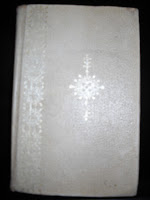Dear Readers
As the year draws to a close, it’s time for me to look back
at the places I’ve discovered because of my love of literature, and look
forward to 2013 and the surprises it holds.
This blog was a chance for me to visit and share museums and villages
where certain writers lived at some point or other during their lives. I must
admit though, I didn’t expect to make some of the discoveries I have made. It’s been a thrill for me to step into the
past and well, just imagine.
 |
| Lady Macbeth Stratford Upon Avon, Charles Dickens Museum London & Old Thatch Gardens Bourne End. |
I think the most memorable places that I’ve visited and
shared with you would have to be Stratford upon Avon and Bath. I enjoyed all of
the Shakespeare stuff and would gladly do it again, and The Jane Austen Centre
was a treat not to be missed. But even
though I enjoyed these places the most, I’ll never forget trudging all over
Hartfield to get myself a gold Winnie the Pooh sticker, or my visit to Bourne
End and Old Thatch. Closer to home though, I loved the Dickens Museum and Keats
House, both of which are very accessible from where I live and visiting the
Sherlock Holmes Museum with my sons was a pleasure. It’s amazing to think that
I’ve been an avid reader all of my life and now I finally have the opportunity
to see all of this stuff.
 |
| Clockwise from top left, Pooh Country Hartfield, Keats Grove Hampstead, Sherlock Holmes Museum London, Roald Dahl Museum Great Missenden & Jane Austen Centre Bath. |
It’s not just the exploring that’s I’ve enjoyed this year
though. My family and friends have
enjoyed the journey too as I come home with little gifts from various places
and they like to know more about the discovery.
They in turn have bought me presents to help me with my escapades, in
the form of books of course, and you can never have too many books. Along the
way I’ve collected several things myself which have now become a part of the
sacred blog book I’ve created to help me collate information so that I can find
the houses and monuments and so forth that interest me. It contains bus routes
and train lines that help connect me to the gems that I love to seek out. There
are post cards and travel tickets stapled to the pages and I now have hundreds
of photos of buildings, monuments and graves on my laptop.
So, what does 2013 hold for me? Firstly, I plan to travel a little further
afield. This is a big wide world full of
literary treasure just waiting for me to explore it. So for a sneak peak, let me just say that I
hope to visit places such as Brasov in Transylvania and perhaps Prague and
Odense. Dublin is definitely on the list
and so is Edinburgh. Closer to London, a trip to Canterbury isn’t out of the
question and I think a weekend down in Devon might be in order. When my sister visits later in the year,
we’re heading for the Lake District to Wordsworth country and of course we’ll
be seeking out the world of Beatrix Potter. The list doesn’t end there though,
there’s a lot more on the horizon for us which I’m sure you’ll enjoy.
With all of this in mind, I must say that the thought of
2013 excites me and for the last time this year might I add that Once upon
a time in London, I discovered something that consumes my life and makes me
truly happy to share it with you all.
Happy New Year and thank you for reading.





























